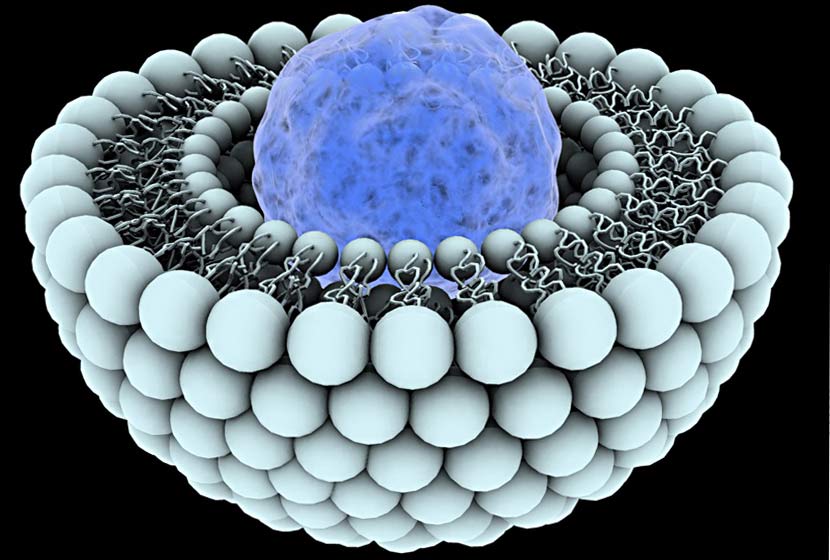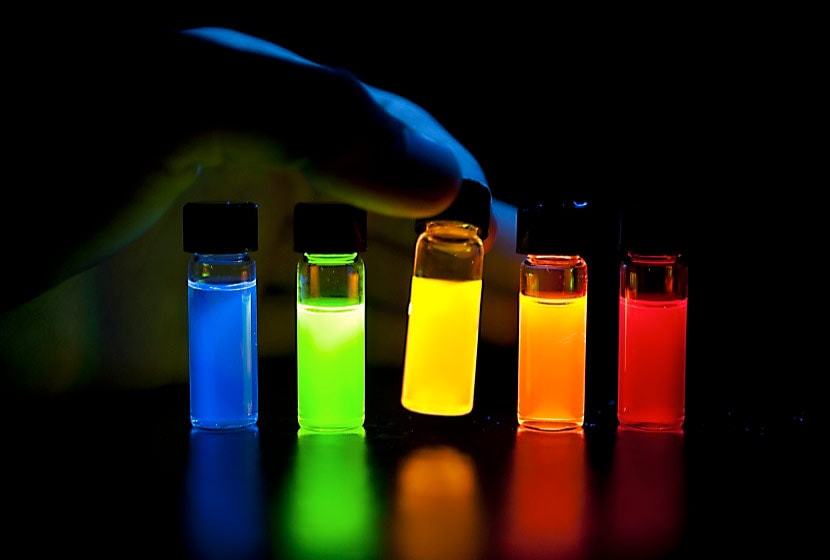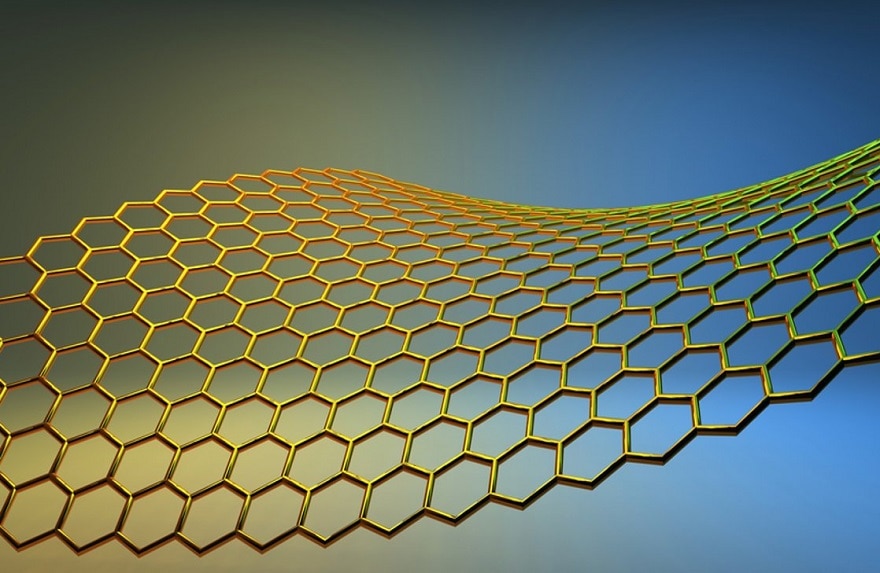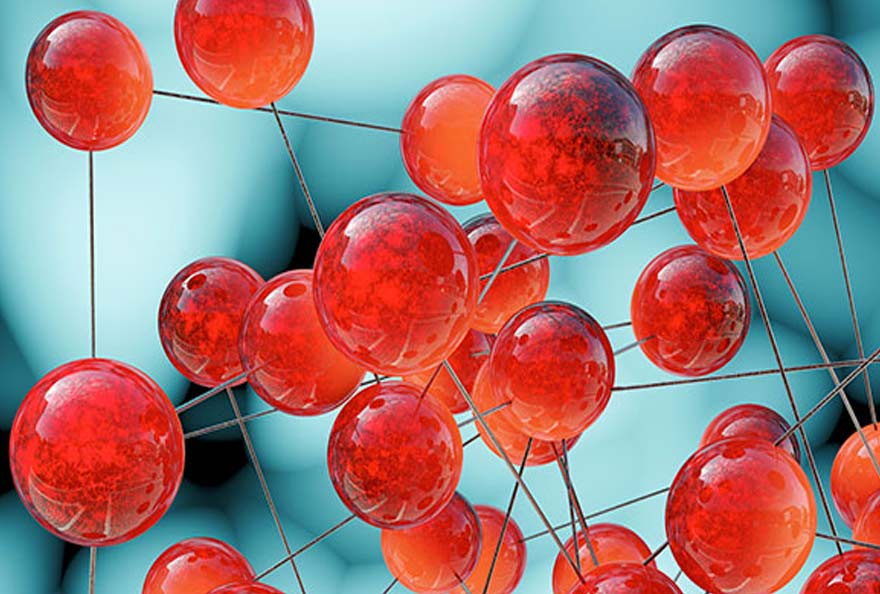Nanotechnology covers all the techniques, tools and processes that make it possible to manipulate matter on a scale of less than a hundred nanometres (1 nanometre = 1 billionth of a metre), to develop new materials and components that are ever smaller, to build new molecules atom by atom and to exploit their properties for new applications. Like all physical objects, we are made up of atoms, the basic units of matter. Like a Russian doll, our matter is composed of bricks that fit together. Atoms assemble into molecules. These molecules organize themselves to create cells, from which the organs we are made of are constructed. Between the atom and us, there are several levels of organization.
The impact of nanotechnology on the economy is very promising, as there will be many industrial applications in a wide variety of fields. Nanotechnology is expected to constitute a considerable market in the coming years. By 2015, 15% of the world's manufacturing activity would be concerned by devices or materials using nanotechnology-based advances.
From a scientific point of view, some see it as a major turning point, others see it as a continuity. One thing is certain, the emergence of the nanoworld is starting a new technological revolution, the impacts of which will have a major impact on society... Just as the arrival of digital technology has changed lifestyles.
Nano, an economic issue
The world market for nanotechnology, still in its infancy in 2001, was already estimated at €40 billion. Today, with the massive commitment of research and development budgets to accelerate innovation, estimates are panicking: a market of several hundred billion dollars annually has opened up since 2010.
In 2008, the global market was estimated at $500 billion and could double by 2015, according to the National science foundation. The development of nanotechnology could generate direct employment for more than 2 million people.
In particular, massive investment in raw materials such as metals or ceramics will be reduced, thanks to the development of new nanomaterials, as well as a new approach to manufacturing objects atom by atom ("bottom up"), which could reduce the quantities of residues.
Another aspect is energy saving through optics, for example. Reductions in consumption of 50% of public lighting are expected in the coming years. Very high-efficiency emitters will be twenty times more efficient than current bulbs, which give off only 3 to 4% of energy in light (the rest is dispersed as heat). A record has already been set at the Palaiseau Laboratory of Condensed Matter Physics: light-emitting diodes provide 28% of light. Their objective: to restore up to 70% of light.
In this unbridled economic race, heavy prior investments are required. If the price of an electronic component falls, the financing needed to manufacture it will continue to increase. With the rate of renewal of techniques imposed by the miniaturization of components and structures, the cost of implementing processes doubles every thirty-six months. It already represents five to six billion dollars each year worldwide.

The industrial boom
This revolution in the size of components and the structure of materials will have an impact in the most diverse manufacturing fields, whose current production is carried out to the precision of the micrometer: electronics, aeronautics, defence, the environment or construction materials, for example. At stake are new mechanical, electronic, thermal, magnetic and catalytic properties to be exploited.
Among other major advances for the industry is the improvement of catalysis. This chemical reaction is already accelerating the manufacturing processes of materials, without modifying them. Its performance will rapidly evolve: nanopowders are replacing current powders of rare heavy metals such as platinum or palladium. With a larger surface area, they make them more efficient by consuming less material. Better still, at the nano scale, metals such as gold, which are inert at the macroscopic level, become highly reactive.
These nanoparticles could enable industry to free itself from producers of rare and expensive materials. Metals, polymers and ceramics will be used less and less. The same goes for aluminium and plastic in everyday objects. The automotive industry is targeted, in particular. These new catalysts will improve the filtering of exhaust pipes by attracting more undesirable hydrocarbon, nitrogen or carbon oxide molecules to a surface of aggregates of atoms that will trap them.
 Nanosciences in consumer products
Nanosciences in consumer products
In anticipation, the manufacture of transistors up to 500 times smaller than those on the market today, thanks in particular to silicon etching systems drawing lines less than 10 nm wide on the chips, compared with 65 currently. Other integrated circuit architectures are under study, on new plastic supports rather than silicon (this is known as soft lithography). Eventually, microelectronics will be replaced by optics: faster than electrical connections, laser transmissions avoid energy losses.
Applications to be appropriated
The development of the nanoworld has a strong impact on society's relationship to technology, as its applications are already making their way into our daily lives. These "nano" objects are, for some, invisible to the naked eye, for others a mixture of inert and living. The link between the user and the machine sometimes seems to be modified.
Already, some nanomaterials or objects are there. The leisure industry is taking advantage of the first advances in carbon nanotubes to lighten tennis rackets, golf clubs and other sports equipment. As for the cosmetics industry, it integrates titanium or zinc oxide nanoparticles in sunscreens to filter UV rays. Not to mention nano-chips for the medical diagnosis of diabetes. The microelectronics industry is not to be outdone: nanolasers in DVD players, sensors, batteries, screens...
In electronics, the capacities for information storage, energy autonomy and communication will intensify the interface between man and his environment via sensors and other interconnected actuators or portable devices that consume little electricity (nomadic energy). New telephones and flat screens - made up of nanoelectrodes, stimulated by a matrix of electron guns made of carbon nanotubes - are booming. The road to a quantum computer, which would perform millions of operations by exploiting the principle of quantum superposition, is no longer very long. As for nanometric monitoring systems, they enable identification and localisation, i.e. the traceability of products, the security of payment methods or the exchange of information online.
In health care, prostheses, cochlear implants or heart valves made of biocompatible nanomaterials are already emerging. Nanospheres up to 70 times smaller than a red blood cell are used to transport an active principle to the heart of the organ to be treated. This eliminates side effects in other parts of the body, as is the case with treatments for AIDS, liver disease or certain cancers, for example. Diagnostic laboratories the size of a microchip already exist, for medical results that are cheaper, faster and more accurate than those obtained from a blood test.
 A confusing world
A confusing world
The Nanoworld is a universe with its own laws: miniaturization has always been one of the priorities of science and technology. When you enter the Nanoworld, you don't just change scale: other laws govern it. In the land of atoms, the forces that dominate our lives, such as gravity, are practically unimportant.
The laws of classical physics give way to those of quantum physics.
The nanoworld is often confusing because the phenomena that become prevalent there are not perceptible on our scale. Quantum physics describes the laws governing nano-objects, which are too small to be visible to the naked eye and therefore sometimes disturbing. An ethical reflection is necessary to distinguish between fantasy and legitimate fear.
These nanotechnologies are therefore a cause for concern. Manipulating matter at the molecular scale and interfering with the living world raises ethical and health issues that will have to be taken into consideration by public authorities and stakeholders. This is another debate...
Photo © Federico Bebber
(Source: CNRS 2014)












